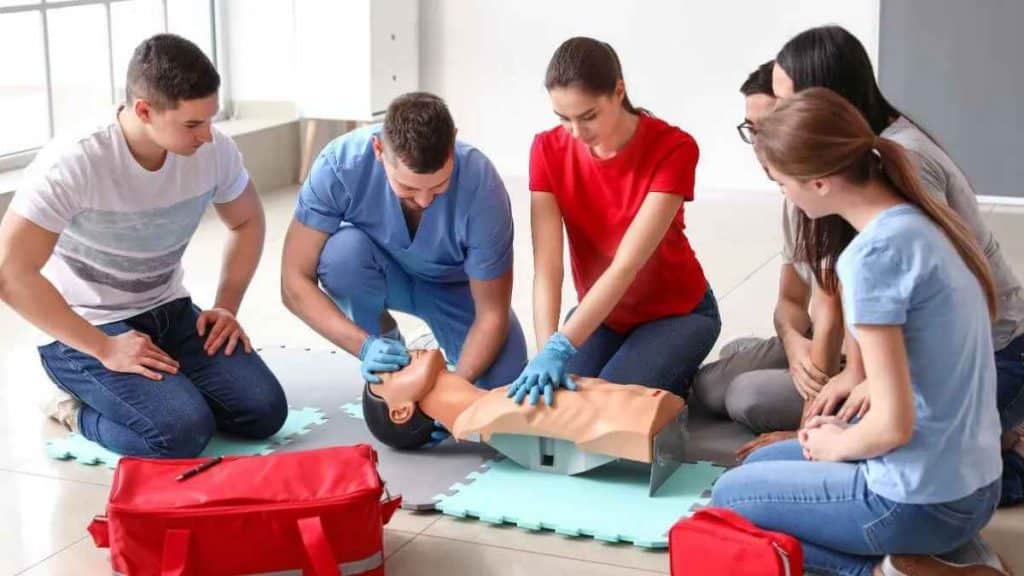Accidents are unpredictable, but our preparedness isn’t. When an emergency strikes, having the right first aid training can mean the difference between life and death. Selecting the ideal first aid training provider is a pivotal step in ensuring you’re equipped to handle unforeseen situations with confidence and competence.
Your choice of a first aid training provider should not be taken lightly. It’s an investment in the safety and well-being of yourself, your family, and your community. By the end of this article, you’ll have a clear understanding of what to look for in a provider, enabling you to make an informed decision that aligns with your specific needs and priorities.
Read on to empower yourself with the knowledge and skills needed to be a first responder in critical situations. We’ll ensure that you’re not just a bystander, but a capable and confident provider of first aid when it matters most.
1. Accreditation and Certification
The first and most critical factor to consider when choosing a first aid provider is their accreditation and certification. Ensure that the provider is recognized and accredited by reputable organizations in the region. Brisbane First Aid Courses ensures that their training programs meet high standards and are up-to-date with the latest best practices.
Many employers require or prefer candidates with relevant certifications. Having a recognized first aid certification can improve your job prospects in various industries.
2. Specialized Training
Different situations call for different types of first aid training. Consider the specific needs of your environment. For instance, if you work in an industrial setting, you may require specialized training in handling workplace-related injuries. If you’re involved in outdoor activities, wilderness first aid might be essential. Look for a provider such as The First Aid Course Canberra that offers the specific training relevant to your situation.
3. Trainer’s Qualifications
First aid trainers are not just educators; they are mentors, role models, and, in many ways, the first responders to the trainees’ questions and uncertainties. Their role goes beyond imparting theoretical knowledge; they must instill confidence and practical skills in their students.
An effective first aid trainer must have an in-depth understanding of the subject matter. This includes knowledge of anatomy, common injuries and illnesses, emergency response protocols, and the proper use of first aid equipment. Their expertise should extend to various age groups and specific situations, such as pediatric first aid or wilderness emergencies.
4. Course Duration and Format
Consider the time commitment required for the course. Some providers offer intensive courses that can be completed in a single day, while others have more comprehensive programs that may span several weeks. Choose a format that fits your schedule and learning style.
Whether you opt for a short online course or a comprehensive in-person program, the ultimate goal is to equip yourself or your team with the confidence and abilities to provide crucial assistance in critical situations.
5. Course Content
Review the curriculum thoroughly. It should cover a wide range of topics including basic life support, wound care, CPR, AED usage, and more. Ensure that the content aligns with the specific needs of your environment or activities. For instance, if you’re involved in childcare, pediatric first aid should be part of the curriculum.
6. Feedback and Reviews
Check for reviews and testimonials from previous participants. This can provide valuable insights into the quality of the training and the effectiveness of the instructors. Look for feedback regarding the applicability of the training in real-life situations.
7. Location and Accessibility
Consider the location of the training center. It should be easily accessible and preferably located in a safe and convenient area. This ensures that you can attend classes without unnecessary logistical challenges.
8. Cost and Value for Money
While cost is a factor, it should not be the sole determining factor. Look for a provider that offers a reasonable price for the quality of training provided. Compare costs across different providers and consider the overall value for money.
9. Recertification and Ongoing Education
First aid techniques and protocols can evolve over time. Ensure that the provider offers opportunities for recertification and ongoing education to keep your skills current. This is particularly important in professions where first aid skills are a requirement for continued employment.
10. Accessibility of Resources
Consider whether the provider offers additional resources such as manuals, online materials, or apps for easy reference after the course. Having access to these materials can be invaluable in reinforcing what you’ve learned.
Conclusion
Selecting the right first aid provider is a crucial decision that can greatly impact your ability to respond effectively in emergencies. By considering factors such as accreditation, specialized training, instructor qualifications, course content, and accessibility, you can make an informed choice.
Remember, investing in quality first aid training is an investment in the safety and well-being of yourself and those around you. Take the time to research and choose wisely, and you’ll be better prepared to handle any emergency situation that arises.
